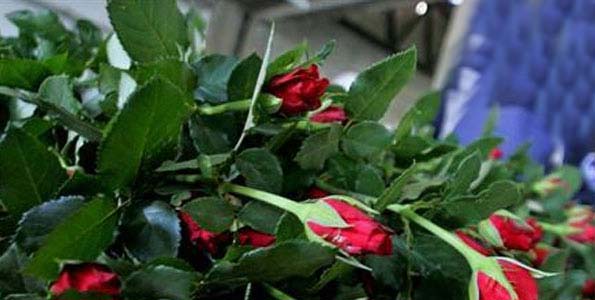| |
 MARCH
04, 2012: Horticulture exports could fetch up to $7 billion
with a little attention on improving the yield through
research and development which is badly lacking at present. MARCH
04, 2012: Horticulture exports could fetch up to $7 billion
with a little attention on improving the yield through
research and development which is badly lacking at present.
CEN Harvest Trading and member export committee of Islamabad
Chamber of Commerce and Industry, Ahmad Jawad talking to
Business Recorder said that while production of fruit and
vegetables was coming down in Pakistan, in neighbouring
India which is the second largest grower in the world, there
has been a significant increase in the production of
horticulture crops in recent years.
Crops covering fruit, vegetables and spices occupy an area
of 17.7 million hectares, producing 218.7 million tones of
horticulture produce.
He said that strong leadership and commitment of key players
from the agriculture sector could help Pakistan become a
formidable force in the international market, as there is
tremendous room for growth.
"Although country is surplus in producing mango, citrus,
date, paddy rice, we have to feed 180 million people of the
country.
We could capture the global market of said commodities only
if we were to process, add value and improve the shelf life
of the perishable commodities to benefit our small farmers
and the country at large."
The main issue is to first have a proper long-term strategy
and solutions which, unfortunately, is missing and hindering
the growth of exports as a result of faulty decisions, he
said.
Jawad said Commission markets in the Middle East are "pain
in the neck" for the exporters of horticulture products.
Currently, 70 percent of the
fruit, particularly Kinnow and mango, are exported to Middle
East every year but the exporters, instead of making
profits, bear huge losses due to the existence of these
markets.
Stakeholders in the horticulture value chain say that
although Pakistan Horticulture Development and Export
Company's (PHDEC's) main thrust should be to introduce
Pakistan to high end international markets through strategic
efforts along with integrated interventions and facilitation
in all the sub-sectors of the value chain, but unfortunately
it lacks proper vision and planning.
Missing awareness among Pakistani exporters about global
food safety standards, cohesive supply chains, and marketing
systems are also to blame for keeping country's produce
export volumes low, he added.
He said that out of 13.67 million tonnes of annual
production of fruits and vegetables in Pakistan, about 30
percent is lost during pre and post-harvest stages due to
primitive and poor techniques of handling.
It is believed that improvement in harvest management
infrastructure for horticultural products will not only help
reduce harvest losses, increase production surplus and also
the shelf life and quality of fresh produce, but would also
greatly contribute to stabilising the prices in domestic
markets and substantially boost exports.
Jawad regretted that a majority of growers are unaware about
the ethics of domestic market as well as of international
trade due to which they cannot envisage the forthcoming
demand of fruits.
As a result they are neither able to plan for future nor
have the capability to acquire the requisite needs
compatible to the foreign market.
Thus, there is a need for organising training programmes and
demonstrations on production-cum-marketing technology for
attaining standard products.
India is the second largest producer of fruits in the world,
falling behind China.
It is, however, the largest producer of mango, banana,
papaya, sapota, pomegranate and Aonla.
About 40 percent of the world's mangoes and 30 percent of
the world's bananas and papayas are produced in India.
In terms of productivity of grapes, India ranks first in the
world, he said.
If we compare Pakistan's Punjab and India's Punjab, the big
provinces on both sides, one would see a big difference; the
yields of wheat, paddy and sugarcane are much higher in
India.
In the case of two Punjab's which were split apart by a line
drawn hastily by Sir Cyril Radcliffe in 1947, the Indian
state has clearly shot ahead of its Pakistani counterpart on
the farm front, he said.
Similarly the level of mechanisation of agriculture is much
higher on the Indian side.
The number of tractors and diversity of brands seen
operating in India's Punjab quite outnumber the Pakistan
side.
While combined harvesters are a rare sight in Pakistan,
where wheat and paddy are cut manually, they are
indigenously manufactured in India and their use is
widespread, he said.
Courtesy: Business Recorder |